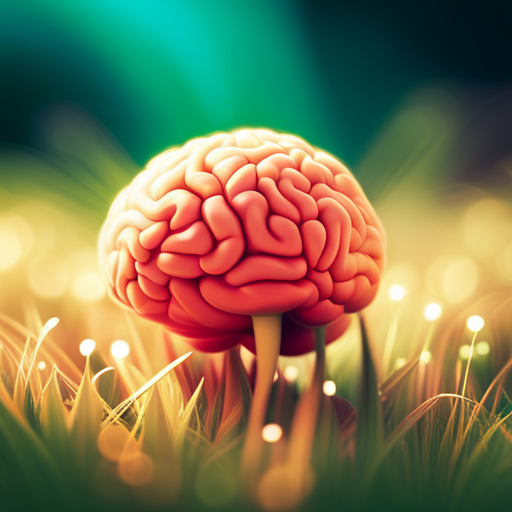Ever thought about what vivid dreams really look like?
Well, let me tell you, they are a fascinating and intricate display of the subconscious mind at work.
In this article, we will explore the vivid visuals, intense emotions, and uncanny details that make dreams so memorable. Through scientific research and evidence-based theories, we will delve into the role of our senses in creating these vivid dreamscapes and how they can be manipulated through the phenomenon of lucid dreaming.
Additionally, we will discuss the intriguing connection between dreams and the subconscious mind, shedding light on the profound meanings and symbolism that often emerge during these nocturnal adventures.
Furthermore, we will explore techniques to enhance and remember these vivid dreams, offering you the opportunity to unlock the hidden depths of your own subconscious.
So, if you have ever wondered what lies beyond the realm of wakefulness, join me on this journey as we unravel the captivating world of vivid dreams.
Key Takeaways
- Vivid dreams are a display of the subconscious mind at work, consisting of vivid visuals, intense emotions, and uncanny details.
- They evoke strong emotions and create lasting memories, helping to process and regulate emotions.
- Vivid dreams are filled with unexplainable and peculiar elements, with every element having significance and offering insight into the workings of the subconscious mind.
- They are associated with higher emotional intelligence, problem-solving skills, creativity, and mental well-being.
Vivid Visuals in Dreams
Have you ever had a dream where the visuals were so vivid, it felt like you were living in a different reality?
Vivid visuals in dreams can be a fascinating and awe-inspiring experience. When we dream, our brain creates a world full of intense colors and surreal landscapes that can rival the most vibrant and imaginative paintings. In these dreams, the colors seem to be richer and more vibrant than what we see in our waking lives.
The landscapes can be breathtaking, with fantastical elements that defy the laws of physics. I’ve personally experienced dreams where the sky was a mesmerizing shade of purple, and the grass glowed with an ethereal green hue. These vivid visuals create a sense of wonder and transport us into a world beyond our imagination.
As we explore the intense colors and surreal landscapes in our dreams, we also delve into the next aspect of the dream world: the intense emotions experienced.
Intense Emotions Experienced in Dreams
Imagine yourself experiencing intense emotions in your dreams, where studies have shown that over 70% of people feel strong emotions such as fear, joy, or sadness during their dream state. These intense dream narratives hold great psychological significance, offering a glimpse into our innermost thoughts, fears, and desires.
When we dream, our brain simulates a variety of emotional scenarios, often drawing from our personal experiences and memories. These intense emotions can be so vivid that they feel just as real as waking life.
Research suggests that intense emotions in dreams serve several purposes. They can help us process and regulate our emotions, allowing us to confront and work through unresolved feelings. Additionally, intense emotions in dreams can provide valuable insights into our psychological well-being, revealing underlying anxieties or unresolved conflicts.
Furthermore, the psychological significance of vivid dreams lies in their ability to create lasting memories. The intense emotions experienced during these dreams, combined with their uncanny details, make them highly memorable. These details can be so vivid and realistic that they leave a lasting impression, often lingering in our minds long after we wake up.
Transitioning into the subsequent section about uncanny details that make dreams memorable, it’s fascinating to explore how our dreams can be filled with peculiar and inexplicable elements.
Uncanny Details that Make Dreams Memorable
Explore the strange and unexplainable elements that fill your dreams, creating unforgettable and captivating experiences. In the realm of dreams, vivid and detailed imagery is often encountered, leaving a lasting impression on the dreamer. These uncanny details not only add to the realism of the dream but also contribute to its symbolic meaning. Dream interpretation and symbolism suggest that every element in a dream has a significance that can be deciphered to gain insights into one’s subconscious mind.
To paint a picture of the vivid dreamscape, imagine walking through a dense forest where the leaves on the trees change color with every step, creating a kaleidoscope of hues.
Imagine encountering a mystical creature with iridescent wings, emitting a soft glow that illuminates the surrounding landscape.
Picture witnessing a clock tower that melts like liquid, distorting time and creating a sense of unease.
Imagine touching a cold, metallic surface that unexpectedly transforms into a warm, velvet texture, playing with the senses.
These extraordinary details experienced in dreams can have a profound impact on waking life. They can stir emotions, evoke memories, and even inspire creative endeavors. Understanding the role of vivid dreams and their symbolism can provide valuable insights into our innermost thoughts and desires.
As we delve further into the exploration of dreams, let’s now delve into the role of senses in vivid dreams.
The Role of Senses in Vivid Dreams
Indulging in the sensory feast of vibrant dreams, I can’t help but marvel at the kaleidoscope of sensations that transport me to a realm where reality is redefined and boundaries dissolve. In these vivid dreams, my senses come alive, immersing me in a world of vivid colors, tantalizing aromas, and tangible textures. These sensory experiences play a crucial role in how dreams are interpreted and remembered.
In the realm of dreams, my visual experiences are often intensified, with vibrant colors and intricate details that surpass what I see in waking life. The scenery can be breathtaking, from lush landscapes to fantastical realms that defy logic. Similarly, the sense of smell in dreams is heightened, with fragrances that can evoke powerful emotions and memories.
Textures in dreams can be surprisingly real, from the softness of a velvet fabric to the roughness of sand beneath my feet. The tactile sensations add depth and realism to the dream experience, making it even more immersive.
Understanding the role of senses in vivid dreams can provide valuable insights into the complexities of the dreaming mind. As I explore the world of lucid dreaming and gain control over my dreamscapes, I will delve deeper into the mechanisms that underlie these sensory experiences and how they contribute to the overall dream narrative.
Transitioning into the next section about lucid dreaming and control over dreamscapes, I’m fascinated by the potential to harness these sensory experiences and actively shape my dreams.
Lucid Dreaming and Control over Dreamscapes
As I delve into the realm of lucid dreaming, I’m amazed by the power to shape and control my dreamscapes at will. Lucid dreaming is a state in which the dreamer becomes aware that they’re dreaming. This awareness allows individuals to actively participate in their dreams, giving them the ability to manipulate the narrative, environment, and even their own actions.
To achieve lucidity, various techniques can be employed, such as reality checks, dream journaling, and meditation.
Once lucidity is achieved, the dreamer can explore and interact with their dreamworld in unique ways. One of the fascinating aspects of lucid dreaming is the ability to interpret dream symbols. Symbols that appear in dreams can hold personal meaning and messages from the subconscious. By understanding these symbols, individuals can gain insights into their own thoughts, emotions, and experiences.
Incorporating different dreamscapes and realities into my lucid dreams has been a captivating endeavor. From flying through fantastical landscapes to exploring ancient cities, the possibilities are endless. Each dream presents a new opportunity for adventure and self-discovery. By honing my lucid dreaming skills and continuing to explore different dreamscapes and realities, I’m able to unlock the full potential of my dream world and continue to unravel the mysteries that lie within.
Exploring Different Dreamscapes and Realities
Venturing into the realm of lucid dreaming, I’m astounded by the ability to shape and control my dreamscapes at will, transporting myself to surreal and mind-bending realities.
Exploring dream interpretation in these vivid dreams has revealed fascinating insights into the impact they have on mental health.
Vivid dreams, with their intense sensory experiences and lifelike scenarios, offer a unique opportunity to delve into the subconscious mind’s workings. By analyzing the symbols, themes, and emotions that manifest in these dreams, one can gain valuable insight into their psychological state.
For example, a recurring dream of falling may indicate feelings of insecurity or a lack of control in waking life. Conversely, dreams filled with vibrant colors and positive experiences can reflect overall mental well-being.
Numerous studies have highlighted the connection between vivid dreams and mental health. Research suggests that individuals who experience more vivid dreams tend to have higher levels of emotional intelligence, better problem-solving skills, and increased creativity. Additionally, the ability to explore and control dreamscapes in lucid dreams has been associated with improved emotional regulation and reduced anxiety.
Transitioning into the subsequent section about the connection between dreams and the subconscious mind, it becomes clear that understanding the interpretation and impact of vivid dreams is just the first step in unraveling the mysteries of our innermost thoughts and desires.
The Connection Between Dreams and Subconscious Mind
Delving into the depths of our dreamscape, we unearth a profound connection between the enigmatic realm of dreams and the intricate workings of our subconscious mind. Our dreams often serve as a window into our innermost thoughts and emotions, offering a symbolic interpretation of our experiences and desires. By examining the content of our dreams, we can gain valuable insights into our psychological significance and uncover hidden aspects of ourselves.
To fully appreciate the connection between dreams and the subconscious mind, it’s important to understand the concept of symbolic interpretation. Dreams frequently employ symbols to represent deeper meanings, allowing the subconscious to communicate in a language of its own. These symbols can range from everyday objects to fantastical scenarios, each carrying a unique significance that’s deeply personal to the dreamer.
Research suggests that dreams serve various psychological purposes, such as processing emotions, consolidating memories, and problem-solving. They provide a safe space for the subconscious mind to explore unresolved conflicts or express repressed feelings. By analyzing the patterns and themes that emerge in our dreams, we can gain a better understanding of our innermost thoughts and desires.
Transitioning into the subsequent section about remembering and recalling vivid dreams, it’s essential to explore the techniques and factors that contribute to the clarity and accessibility of our dream memories.
Remembering and Recalling Vivid Dreams
To enhance your ability to recall vibrant dreams, try utilizing mnemonic techniques such as creating a dream journal or using mnemonic devices to associate dream content with memorable cues. Keeping a dream journal is an effective way to improve dream recall and gain insight into the meaning behind your dreams. By writing down your dreams as soon as you wake up, you can capture the details and emotions while they are still fresh in your mind. This practice helps to strengthen the connection between your conscious and subconscious mind, making it easier to remember and interpret your dreams over time.
In addition to dream journaling, mnemonic devices can be used to enhance dream recall. These techniques involve associating dream content with memorable cues, such as visual images or rhymes. For example, if you dream about flying, you could create a mental image of a soaring bird to help trigger the memory of your dream. By consistently using these mnemonic devices, you can improve your ability to remember and recall vivid dreams.
By engaging in dream interpretation and regularly documenting your dreams in a journal, you can begin to identify common themes and symbols that appear in your vivid dreams. These recurring elements can provide valuable insights into your subconscious thoughts, emotions, and desires. In the next section, we will explore the common themes and symbols that often arise in vivid dreams.
Common Themes and Symbols in Vivid Dreams
Explore the fascinating world of common themes and symbols that often appear in your vibrant dreams, providing valuable insights into your subconscious mind and sparking your curiosity. Dream interpretation is a powerful tool that can help unravel the psychological significance behind these vivid dreams. By understanding the symbolism and themes that frequently occur, we can gain a deeper understanding of ourselves and our emotions.
In the realm of vivid dreams, common themes often revolve around flying, falling, or being chased. These themes can reflect our desires for freedom, fear of failure, or feeling overwhelmed by life’s challenges. Another common theme is being naked in public, which may indicate vulnerability or a fear of being exposed. These recurring symbols can serve as a window into our subconscious, allowing us to explore our deepest fears, desires, and conflicts.
Additionally, vivid dreams often incorporate symbols such as animals, water, or fire. Animals can represent our instincts, while water symbolizes emotions and fire represents passion or transformation. These symbols provide valuable clues about our inner world and can guide us towards self-discovery and personal growth.
Understanding the common themes and symbols in our vivid dreams can be a powerful tool for self-reflection and personal growth. By delving into the psychological significance of these dreams, we can gain a deeper understanding of ourselves and our emotions. This knowledge can then be used to enhance our waking lives and make positive changes.
In the next section, we will explore techniques to enhance vivid dreaming experiences and harness their potential for self-development.
Techniques to Enhance Vivid Dreaming Experiences
Immerse yourself in the enchanting world of your dreams, where you can unlock hidden potentials and awaken your inner creativity through a variety of techniques that enhance the vividness of your dreaming experiences.
Lucid dreaming, a technique that allows individuals to become aware that they are dreaming while still in the dream state, has gained significant attention in recent years. By practicing lucid dreaming techniques such as reality testing, dream journaling, and meditation, individuals can increase their chances of experiencing more vivid and memorable dreams.
Reality testing involves regularly questioning one’s reality throughout the day. By performing reality checks, such as looking at a clock or trying to push a finger through the palm of one’s hand, individuals can train their minds to question their waking state. This habit then carries over into their dreams, increasing the likelihood of becoming lucid and experiencing a more vivid dream.
Dream journaling is another effective technique for enhancing dream vividness. By keeping a journal and recording dreams upon waking, individuals can improve their dream recall and gain insight into recurring symbols or themes. This practice allows for a deeper understanding of one’s dreams and can lead to more vivid and meaningful dream experiences.
In addition to lucid dreaming techniques, interpreting dream symbols can also enhance the vividness of dreaming experiences. Symbols in dreams often carry personal significance and can provide valuable insights into one’s subconscious mind. By engaging in practices such as dream analysis or working with a dream therapist, individuals can uncover the hidden meanings behind their dream symbols, leading to more vivid and impactful dream experiences.
By incorporating techniques for lucid dreaming and interpreting dream symbols, individuals can enhance the vividness of their dreaming experiences. Lucid dreaming techniques such as reality testing and dream journaling can increase the chances of becoming aware within a dream, while interpreting dream symbols can provide valuable insights into one’s subconscious mind. By immersing ourselves in the enchanting world of our dreams and utilizing these techniques, we can unlock hidden potentials and awaken our inner creativity.
Frequently Asked Questions
How do vivid dreams differ from regular dreams?
Vivid dreams differ from regular dreams in several ways. Firstly, they’re more intense and lifelike, with vivid sensory experiences, emotions, and memories. Lucid dreaming, where one’s aware they’re dreaming, is more common in vivid dreams.
Secondly, the content of vivid dreams can be more bizarre, fantastical, or emotionally charged.
Lastly, the interpretation of vivid dreams can provide valuable insights into one’s subconscious mind, helping to uncover hidden desires, fears, or unresolved issues.
Can vivid dreams be influenced by external factors, such as the environment or daily experiences?
Vivid dreams can indeed be influenced by external factors, such as the environment and daily experiences. Research has shown that sleep quality plays a significant role in dream vividness. Poor sleep quality, characterized by frequent awakenings or disruptions, can lead to more vivid and intense dreams.
Additionally, stress has been found to impact dream content, with higher levels of stress being associated with more negative and emotionally intense dreams. These external factors demonstrate the complex interplay between our waking experiences and the content of our dreams.
Are there any health benefits or drawbacks associated with experiencing vivid dreams?
There are several health benefits associated with experiencing vivid dreams. Research suggests that vivid dreaming can enhance mental well-being by promoting creativity, problem-solving skills, and emotional processing. It’s believed that vivid dreams allow the brain to process and consolidate memories, resulting in improved cognitive function and overall mental health. Additionally, vivid dreams may provide a form of escapism and serve as a source of entertainment, contributing to overall psychological well-being.
Is there a correlation between the intensity of emotions experienced in dreams and the emotional state of the dreamer in waking life?
There is a correlation between the intensity of emotions experienced in dreams and the emotional state of the dreamer in waking life. Research has shown that dreams can reflect and even amplify the emotional experiences of the dreamer.
For example, individuals with high levels of stress or anxiety may experience more frequent and intense negative emotions in their dreams. This can have an impact on their overall well-being, as it can disrupt sleep and contribute to emotional distress.
Can vivid dreams be a sign of underlying psychological or neurological conditions?
Vivid dreams can sometimes indicate underlying psychological or neurological conditions. In fact, research has shown that individuals with conditions such as anxiety, depression, and post-traumatic stress disorder (PTSD) are more likely to experience intense and vivid dreams.
Additionally, neurological conditions like Parkinson’s disease and epilepsy have also been associated with vivid dreaming. These findings suggest that the content and intensity of dreams may provide valuable insights into a person’s mental and neurological well-being.
Conclusion
In conclusion, vivid dreams are a fascinating and complex phenomenon that provide us with a unique window into the workings of our subconscious mind.
Through vivid visuals, intense emotions, and uncanny details, our dreams offer a rich tapestry of experiences that can be both surreal and captivating.
By exploring techniques to enhance vivid dreaming, we can unlock a world of endless possibilities within our own minds.
So next time you find yourself immersed in a vivid dream, remember that you’re embarking on a journey that’s as vast and extraordinary as the cosmos itself.










